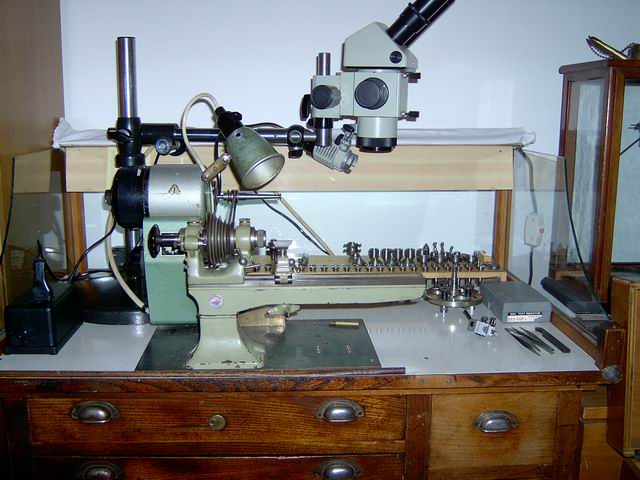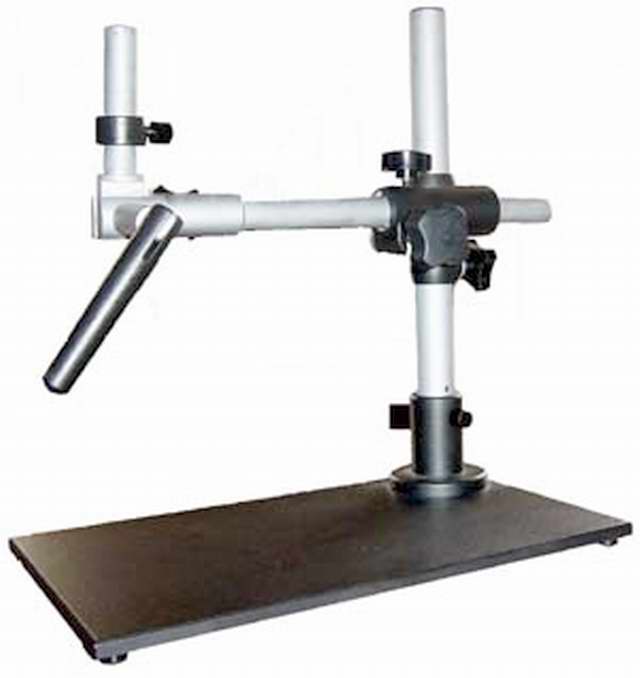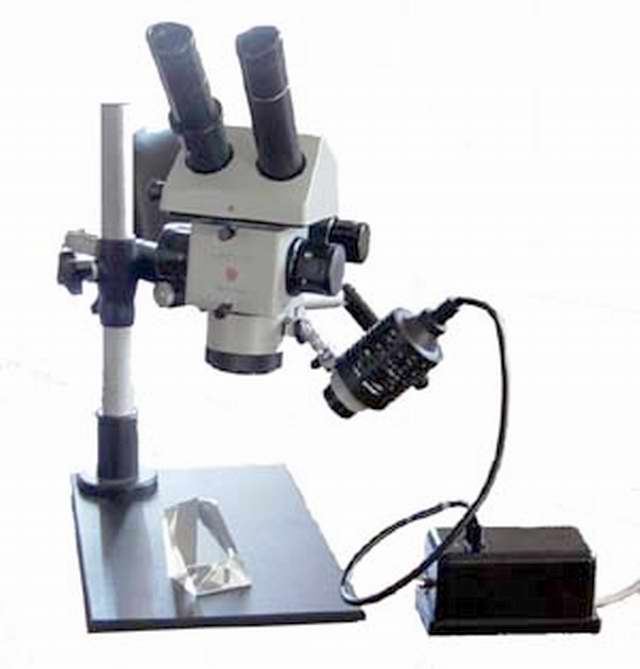|
|
Stereoscopic Binocular |
|
Microscope MBS-10 |
|
|
|
|
|
Main capabilities of the microscope for use in horology should be:
These are the minimum requirements the scope should satisfy in my case as it is used in watchmaking, often mounted on the bench and used with watchmaker's lathe for turning watch parts. After long period of examining various German, Japanese, Korean and other makes of microscopes I decided on buying a ZENIT MBS-10 a Russian manufactured microscope as it comes with very reasonable quality of optics while it does satisfy most of my requirements and is unbeatable price wise. |
|
|
|
|
|
The MBS-10 Mounted on the boom above a WW style lathe ready for work. |
|
|
|
|
|
MBS-10 is a true stereoscopic binocular microscope with magnification in the range of 3 to 100 times arranged with a five-step turret and three sets of ocular magnifiers 6x, 8x, 12,5 (this one I got as extra at no cost) and 14x magnification. The working distance in front of the lens is either 100mm or 200mm (4'' or 8") depending on a lens You decide to use. Measurement capability by a calibrated graticule placed in ocular 8x magnifier usable at the objective lens magnifications of 5, 8, 16, 32 and 57 times of magnification with a resolution of measurement of 170, 100, 50, 25 and 14 micro meters (4, 2.5, 1.27, 0.635, 0.356 thousandths of an inch). A package included a heavy desktop boom stand 20 kg 400mm - 16" column height, arm length 380mm-15" adjustable within horizontal plane with travel of 155mm - 6" moving by turning a knob engaging gear mechanism - not friction, free swing around a vertical column or locked position. Also I got a light with an intensity regulator, standard biology dissecting stand and a standard stand with mirror for viewing slides where the light is passed through. All of this was €240 about US $300. It can be found in US although probably not for as little as this, to the best of my knowledge they go in US for US$ 400 to 650 offered by several outfits. Camera adapter that does not interfere with regular work is about €60 about US $75 that I am sorry I have not bought at first. I usually mount my digital camera with a standard scope ocular adapter onto one of ocular magnifiers and make as many images as needed, could probably use it in video mode to do work under it and observe it on my computer's monitor, never tried though. Also there is a lens that doubles the magnification. I do not see a use for it so I did not get it; it does not come as a part of a package. Only one objective lens comes in the package You decide which one 90 or 190mm, the price is the same. |
|
|
|
|
|
The MBS-10 Stereoscopic Binocular microscope |
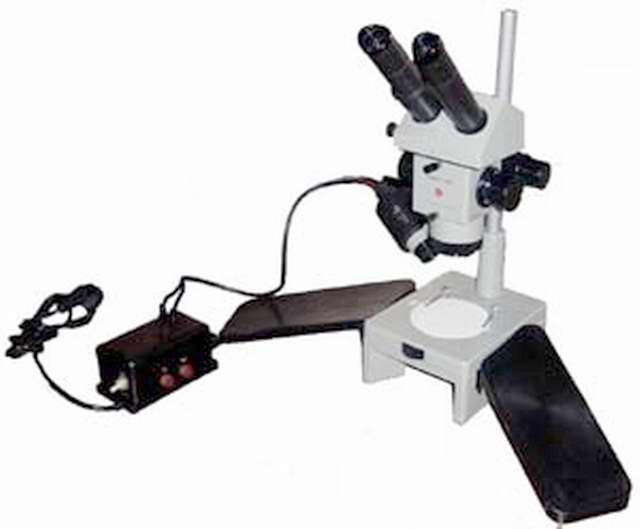 |
|
|
|
|
The heavy duty Boom stand with the column and base weighing some 20 kg |
|
|
|
|
|
The microscope mounted on the boom stand with light fixture and light intensity regulator shown. |
|
|
The camera adapter shown with a CCD camera mounted |

|
|
A typical set-up with CCD video camera mounted |
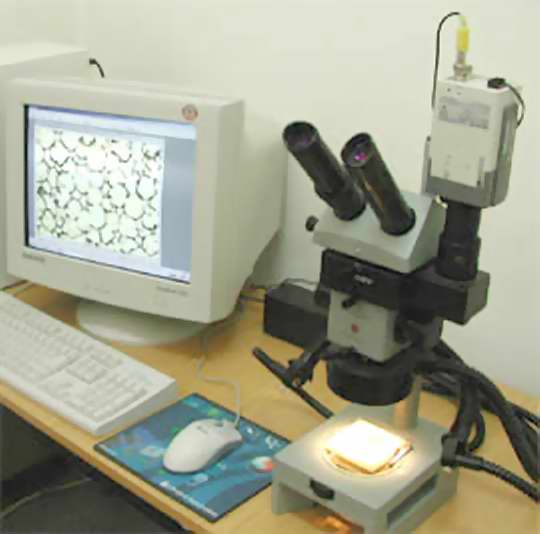
|
|
Standard microscope lens, focal length of 90 mm which provides minimum of
95 mm clearance between its lower edge to the upper surface of the
observed object.
Magnification from 3.3 - 100x using 6x, 8x and 14x eyepieces. |
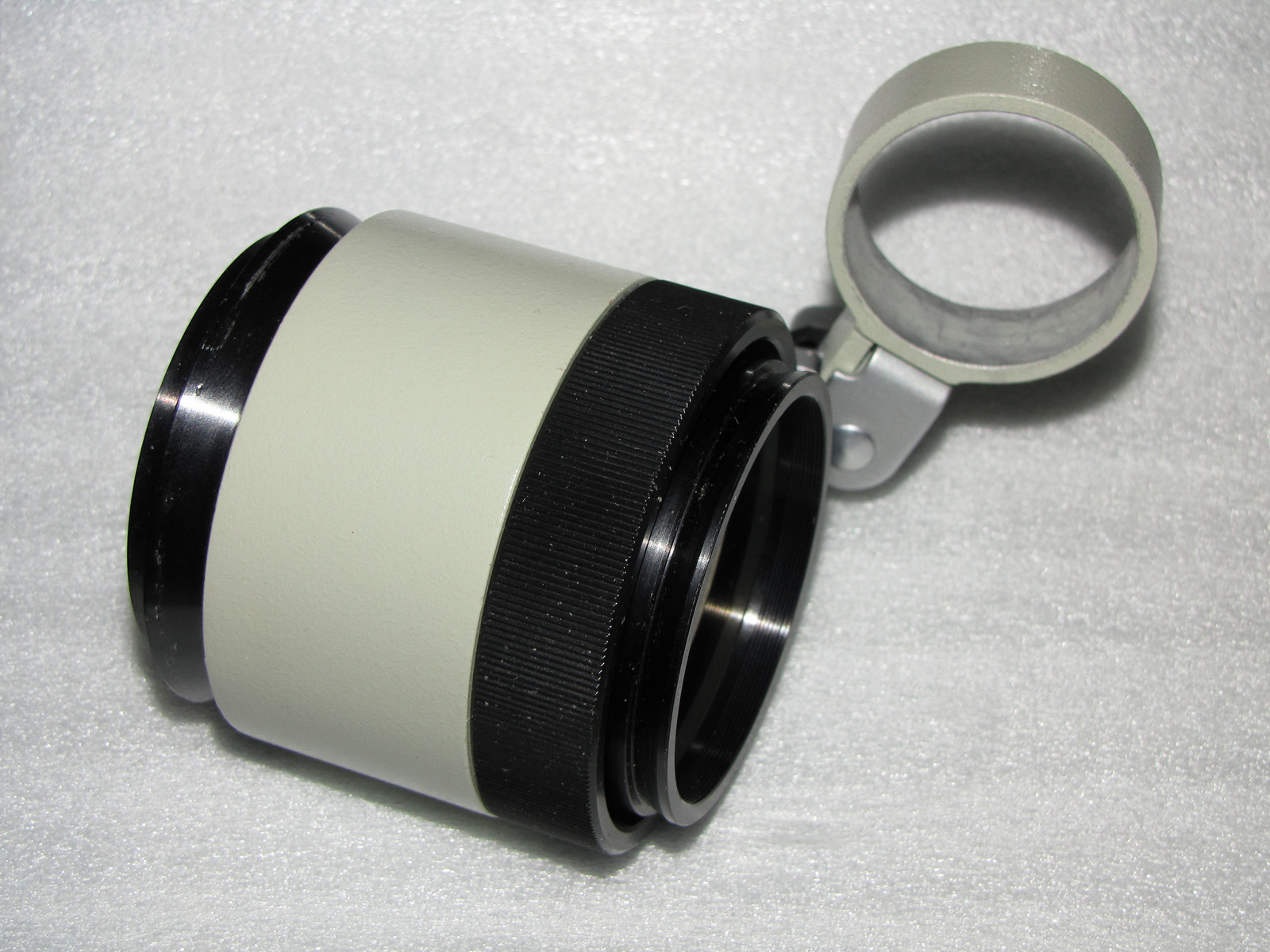
|
|
Exchangeable microscope lens, focal length of 190 mm which provides
minimum of 170 mm clearance between its lower edge to the upper surface of
the observed object.
Magnification from 1.6 - 50x using 6x, 8x and 14x eyepieces. |
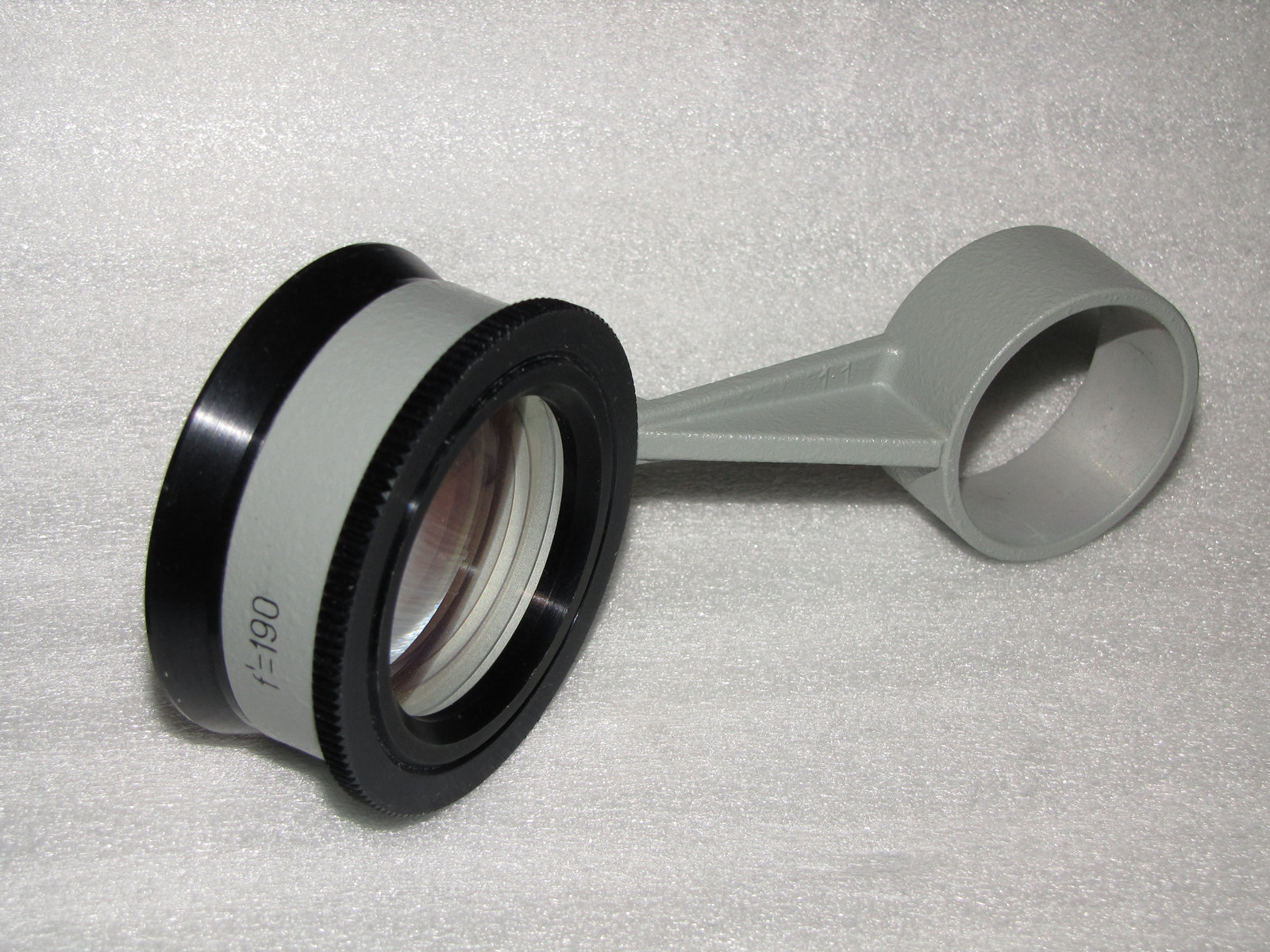
|
|
The box with basic accessories that come as a part of package with the two extra ocular magnifiers of 12.5x magnification that the seller tossed in being happy with the deal He just made, just imagine. |

|
|
Image of an intermediate date wheel of a wrist watch magnified 32 times. On this image it is quite obvious that I do need a ring of light, which I have neglected at the first analyses. |
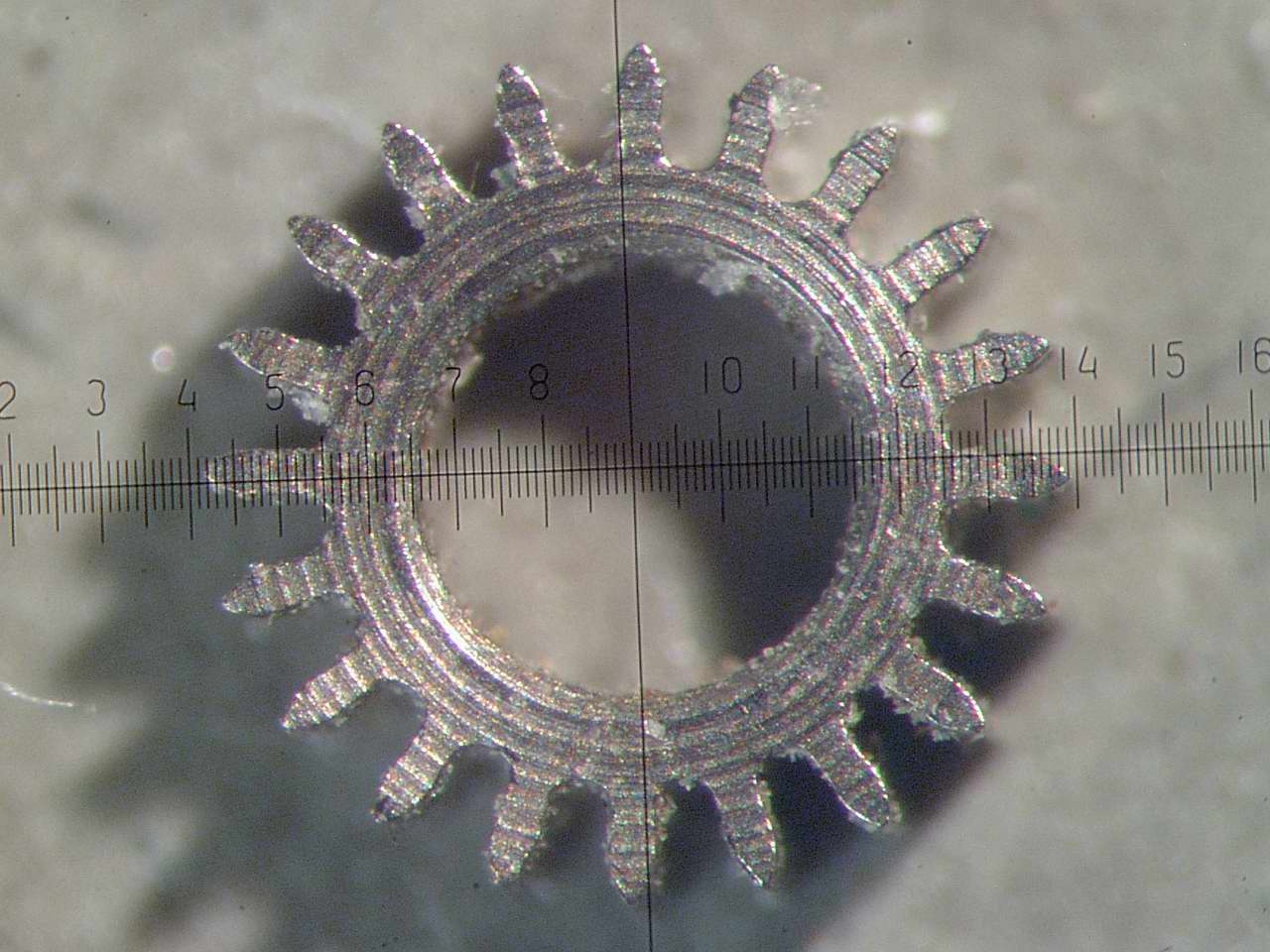
|
|
Crosshairs and scale are parts of graduated reticule insert mounted inside one of the 8x magnification ocular magnifiers allowing accurate readings to be taken. This image is made with an 8x ocular magnifier and objective lens turret set at 4x magnification that gives us a total of 32 and the value of smallest division at this magnification is 0.025 mm or 25 um (0.000635") therefore reading 97 divisions gives us a 2.425 mm (0.061595") diameter. Note: The actual recorded image is of a much higher resolution but reduced here to 640x480 pixels because of bandwidth limitation originally being 2048x1536 pixels and over 1.2 Mbytes |
|
|
|
|
|
|
|
|
|
|
|
|
|
|
|
|
|
|
|
|
|
|
|
|
